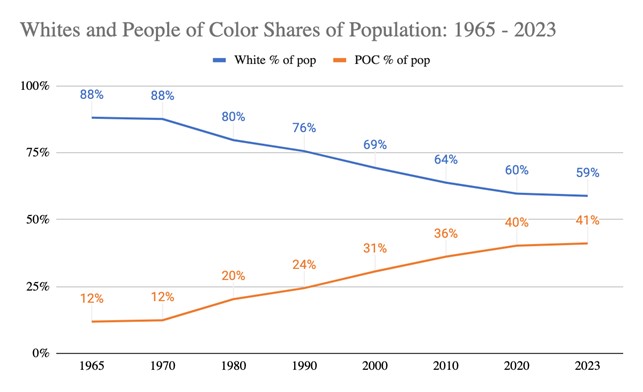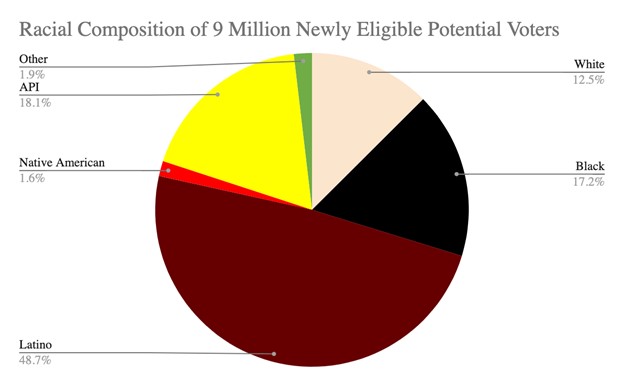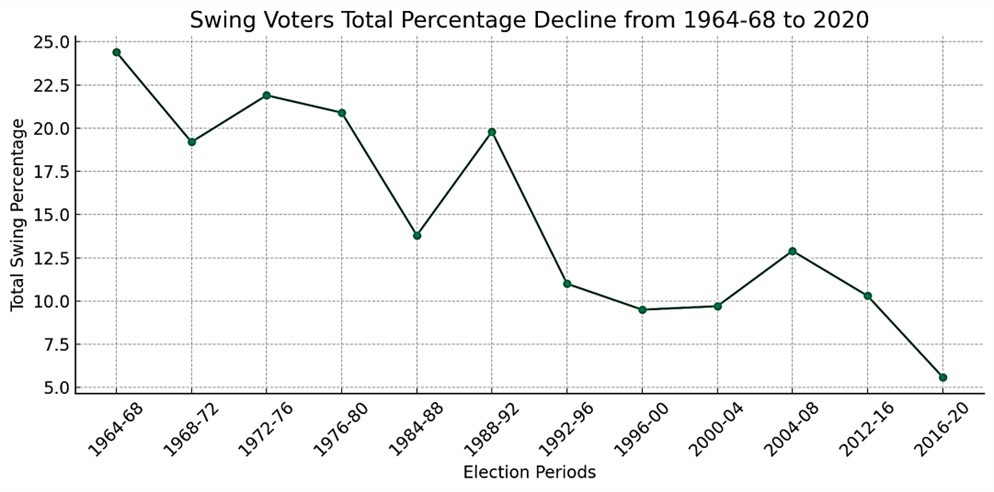Yes, Biden Can Still Win!
Let’s cut out the doom and gloom and look at the facts.

Enough with the pessimism. Progressives, Democrats, and many in the media are both plagued by and perpetuating a pervasive sense of doom and gloom about the 2024 election and President Joe Biden’s chances to win it. This wave of worry is unfounded, as most of the pertinent and predictive data shows that Biden is absolutely the front-runner, poised to win reelection in November.
As the general election campaign begins to heat up, Biden enjoys several structural advantages that significantly tilt the electoral battlefield in his favor.
The Economy
The overarching factor that almost all agree is important in an election year is the state of the economy. Confounding earlier expectations of an impending recession, the economy is remarkably strong.
More than 14 million jobs have been created since 2021, and unemployment is at a near-50-year low of 3.7 percent. The inflation rate has been cut in half, and economic growth is robust. The economist Paul Krugman has written, “The economic news in 2023 was almost miraculously good,” adding “inflation has plunged…even as the economy has boomed, with real G.D.P. rising 3.1% and employment rising by 2.9 million.” These underlying factors have helped propel the stock market to record highs, swelling the 401(k) retirement accounts of workers across the country by an average of $10,000 according to an analysis by Fidelity Investments.
Although inexplicably overlooked and underappreciated, these indicators are excellent news for any incumbent president seeking reelection. The fundamentals of the economy are sound, and the objective reality is that the financial situation of most Americans has improved over the past couple of years.
The Changing Composition of the Electorate
One of the main reasons many analysts and journalists fail to accurately assess contemporary elections is that they have an antiquated understanding of the modern-day electorate. For most of this country’s history, elections were competitions among white people, but the composition of the population has changed, producing a new electoral formula for victory. Most analysts and political consultants, however, fail to appreciate the electoral implications of the demographic revolution.
Ever since the end of legalized white supremacy in immigration and voting laws in the 1960s, the US population has inexorably become increasingly racially diverse. People of color have grown from 12 percent of the population in the 1960s to 41 percent today, and the nation is on course to “majority minority” status by 2045, according to the latest census data. The majority of children under 18—and, hence, the majority of those becoming eligible to vote every year—are people of color.

Given that tapping into white racial resentment and demonizing of people of color are bedrock practices of the modern Republican Party, it should come as no surprise that people of color overwhelmingly support Democratic candidates and causes. According to the exit polls, two-thirds of voters of color backed Democrats in both the 2020 presidential election and the 2022 midterms.
The practical electoral impact of this demographic revolution is that elections need no longer focus solely on white people, and a coalition of progressive whites and people of color can win elections. This multiracial new American majority is what propelled a Black man into the White House in 2008 and ousted a white nationalist from that same building in 2020. In fact, with the sole exception of the 2004 presidential race, the Democratic nominee has won the popular vote in every single presidential election since 1992.
In a country undergoing a demographic revolution, no candidate steps into the same electoral rivers twice, and this also augurs well for the president’s prospects. Biden won the popular vote in 2020 by 7 million votes, and since that time, the pool of eligible voters has grown by more than 9 million people, according to the latest US Census data (applying the latest data on rates of population growth to the 2020 Census numbers). Nearly 90 percent of those new potential voters are people of color (a fact attributable to differing birth and immigration rates, as well as the obvious but uncomfortable reality that the majority of older Americans—and those who die every year—are white).

Much of the prevalent pessimism stems from the outsize attention given to polls suggesting slippage of support for Democrats from voters of color. In November, The New York Times released a poll showing Trump leading in five of six battleground states, with support from voters of color cratering. That same week, however, Democrats swept to victory in several contests across the country, enjoying strong support from voters of color, most notably in Ohio and Kentucky.
Ohio’s November 2023 vote on the Democratic-sponsored pro-choice ballot measure garnered the support of 81 percent of Ohio voters of color, including 74 percent of Latinos. On that same day, Kentuckians went to the polls to choose between a white Democrat, Andy Beshear, and his African American opponent, Trump acolyte David Cameron. If there were ever a test case for the proposition that African Americans were defecting to the Republican Party, Kentucky offered it, but that is not what happened. Not even close. The white Democrat handily defeated the Black Republican, with his widest margins of victory coming in the counties with the most Black voters, such as Jefferson, home to Louisville, where Beshear increased his vote share from 2019’s.
The Shrinking Significance of Swing Voters
A critical third factor benefiting Biden is the steadily shrinking number of people who are swing voters. Much of the national avalanche of anxiety stems from the fear that large numbers of voters will latch onto a concern such as Biden’s age and then swing their allegiance to the Republicans. Such an assumption is contradicted by both ample empirical data as well as common sense.
The gold standard measure of voter behavior is the American National Election Studies (ANES), “a joint collaboration between the University of Michigan and Stanford University” that analyzes voter behavior over several decades. ANES has found a clear and undeniable trend of swing voters virtually disappearing from the populace.

When Patrick Murray, the director of Monmouth University’s polling institute, was asked who the swing voters are in 2024, he amusingly and accurately responded, “You want me to name them individually? Because I probably could at this point.”
To the extent that voters are swinging from one party to the other, Democrats have been the beneficiaries in recent elections. Since the Supreme Court struck down Roe v. Wade, giving a green light to attacks on reproductive freedom, white women—a constituency that backed Donald Trump over Hillary Clinton in 2016—have turned out in force for Democratic-sponsored pro-choice ballot measures, even in previously Republican-leaning states such as Kansas and Ohio. In his analysis of the 2022 Kansas election, market research firm TargetSmart president Tom Bonior concluded, “Voters turned out in record numbers to deliver a resounding victory for pro-choice advocates in a red state where Trump bested Biden 56.2 percent to 41.6 percent in 2020 and Republicans outnumber Democrats by almost 400,000 registered voters.”
Why the Pessimism?
If all of these macro factors bode well for Democrats, why does the pessimism persist? One big reason is a grave misunderstanding of presidential approval ratings. Biden’s approval ratings are admittedly low, hovering around 38 percent as of February 20, 2024. Unfortunately, even intelligent journalists who should know better nonetheless consistently equate current approval ratings with future voting choices, and that is just not how voter behavior works.
To properly interpret why the president’s numbers are low and what implications, if any, they hold for his reelection, it’s important to understand a couple fundamentals. First, as the declining number of swing voters illustrates, a large percentage of the country is implacably opposed to anything Biden does. Between 43 and 47 percent of the country disapprove of this president on the general principle that he is a Democrat. He could cure cancer and make everyone a millionaire, and close to half of the country would still manage to find fault (even Obama, at the zenith of his 2008 “hope and change” campaign, was still opposed by 46 percent of the voters).
Second, a meaningful percentage of those who disapprove of Biden’s performance are people of color and progressives who feel that the White House is too moderate and timid. In fact, perhaps the greatest electoral danger facing the president is the real anger and disillusionment among progressives, especially young people and people of color, stemming from the White House’s refusal to call for a cease-fire in Gaza. But even in the face of widespread and passionate disagreement, progressives remain practical, as evidenced by this week’s Michigan primary, where more than 100,000 people cast a protest vote for “Uncommitted,” instead of backing Biden. Democrats’ sending a message of disapproval to the White House is very different from Democrats’ flipping to back Donald Trump, and the election is still many months away, affording ample time to course correct, use the bully pulpit to promote peace, and solidify the Democratic coalition.
Pessimism as a Self-Fulfilling Prophecy
Given the significant structural advantages Biden enjoys, the greatest electoral danger he faces is low voter turnout (a fact affirmed by the right-wing obsession with making it harder to vote). Worry and anxiety is fine, but worry should lead to constructive action, not negative thoughts. Every time your blood pressure rises and anxiety spikes, go online and make a contribution to a voter-mobilization group in a swing state such as Living United for Change in Arizona or America Votes Georgia.
Perpetuating pessimism is almost like doing the Republicans’ job for them, by spreading doom and gloom and diminishing the motivation to turn out and vote. If progressives do our work right, Biden will win. So let’s do our work right.
Hold the powerful to account by supporting The Nation
The chaos and cruelty of the Trump administration reaches new lows each week.
Trump’s catastrophic “Liberation Day” has wreaked havoc on the world economy and set up yet another constitutional crisis at home. Plainclothes officers continue to abduct university students off the streets. So-called “enemy aliens” are flown abroad to a mega prison against the orders of the courts. And Signalgate promises to be the first of many incompetence scandals that expose the brutal violence at the core of the American empire.
At a time when elite universities, powerful law firms, and influential media outlets are capitulating to Trump’s intimidation, The Nation is more determined than ever before to hold the powerful to account.
In just the last month, we’ve published reporting on how Trump outsources his mass deportation agenda to other countries, exposed the administration’s appeal to obscure laws to carry out its repressive agenda, and amplified the voices of brave student activists targeted by universities.
We also continue to tell the stories of those who fight back against Trump and Musk, whether on the streets in growing protest movements, in town halls across the country, or in critical state elections—like Wisconsin’s recent state Supreme Court race—that provide a model for resisting Trumpism and prove that Musk can’t buy our democracy.
This is the journalism that matters in 2025. But we can’t do this without you. As a reader-supported publication, we rely on the support of generous donors. Please, help make our essential independent journalism possible with a donation today.
In solidarity,
The Editors
The Nation








